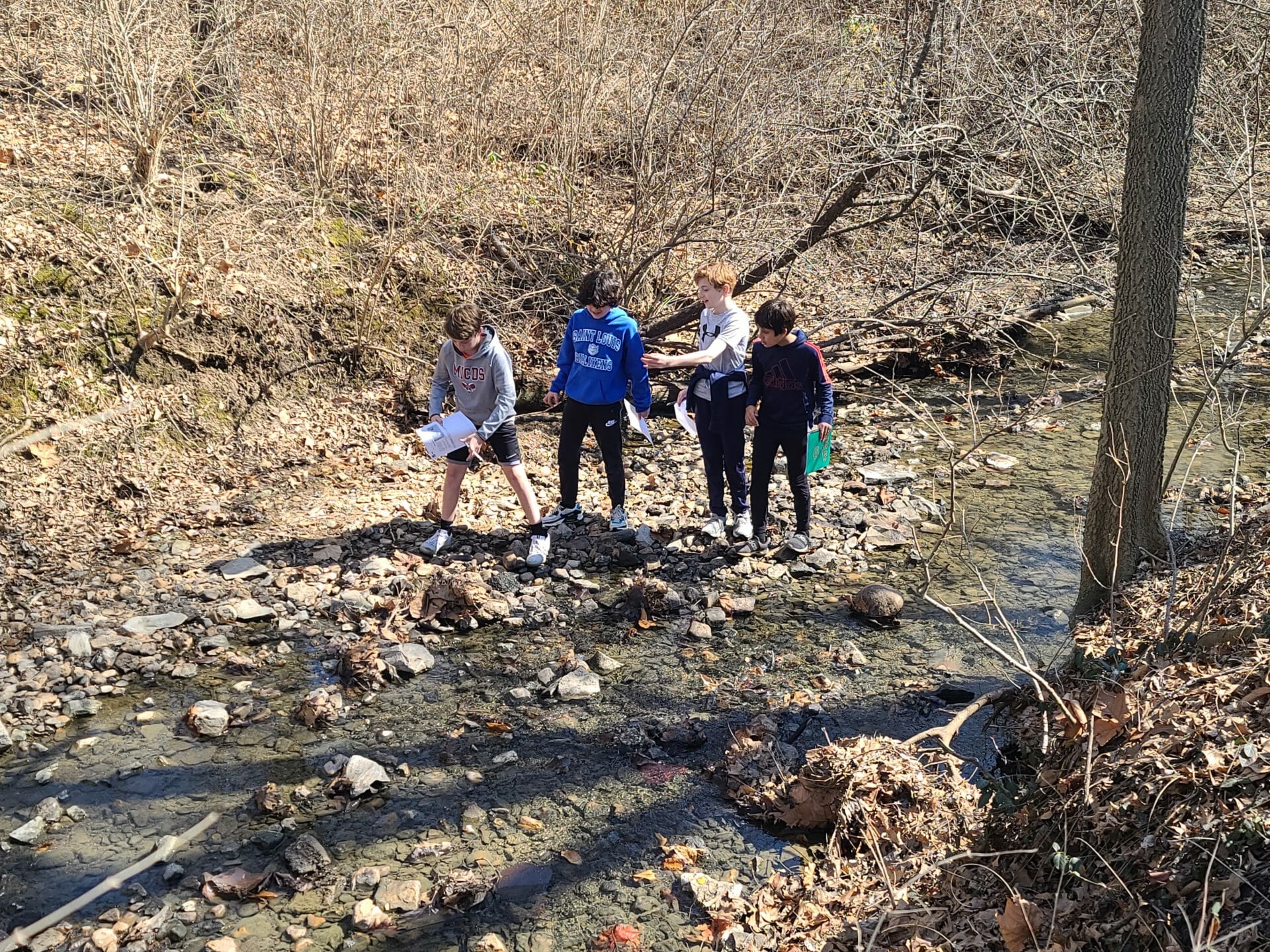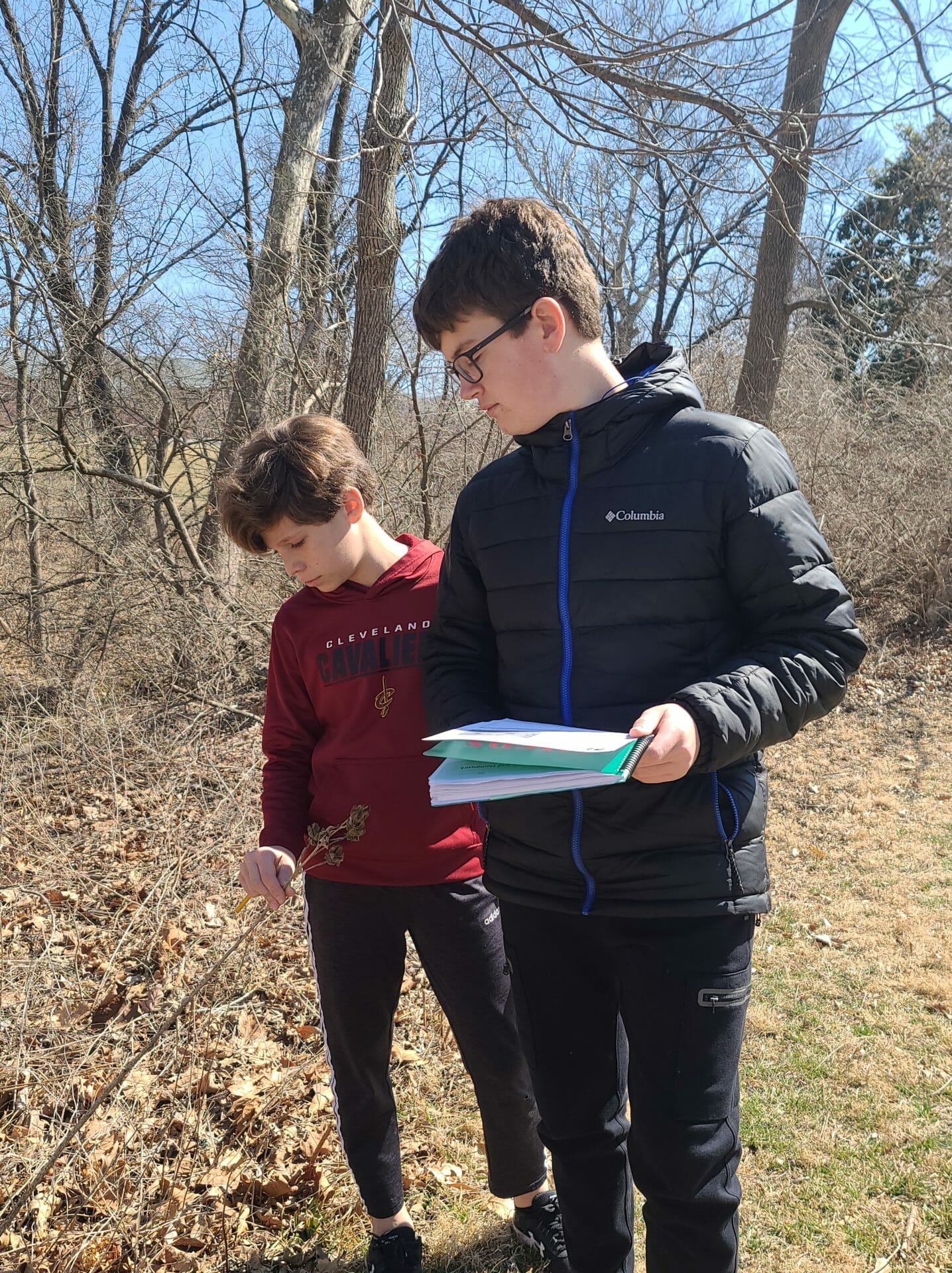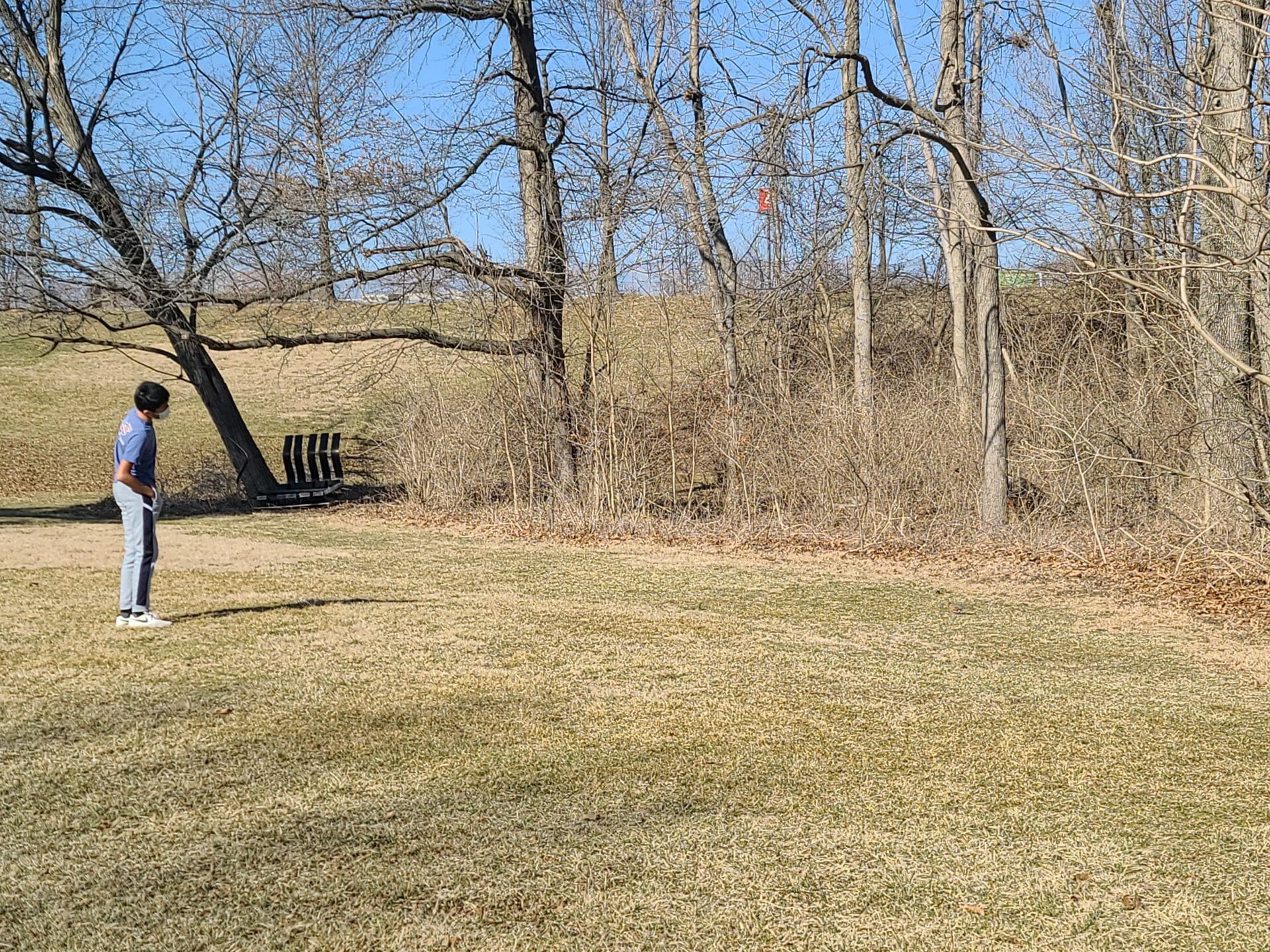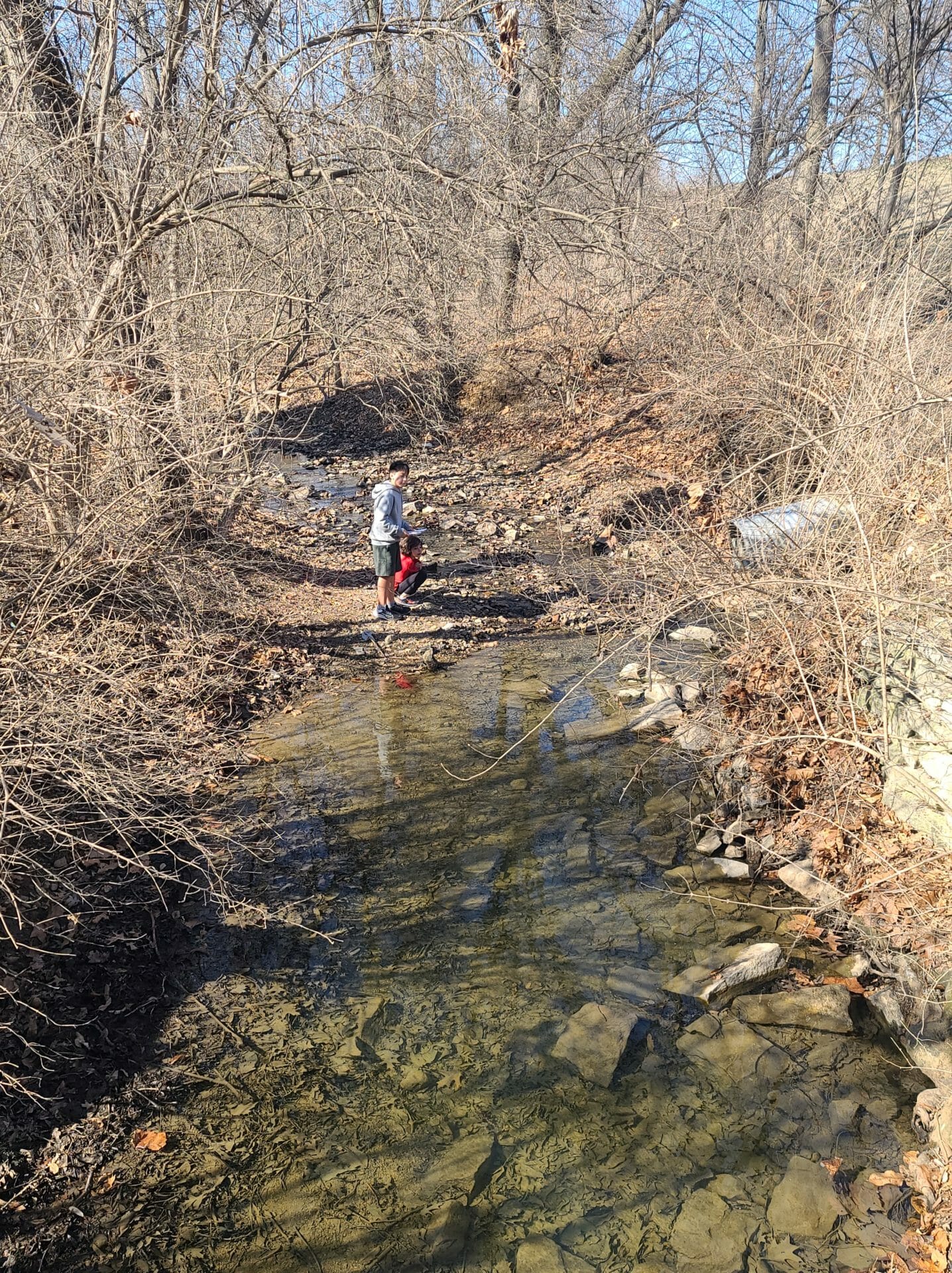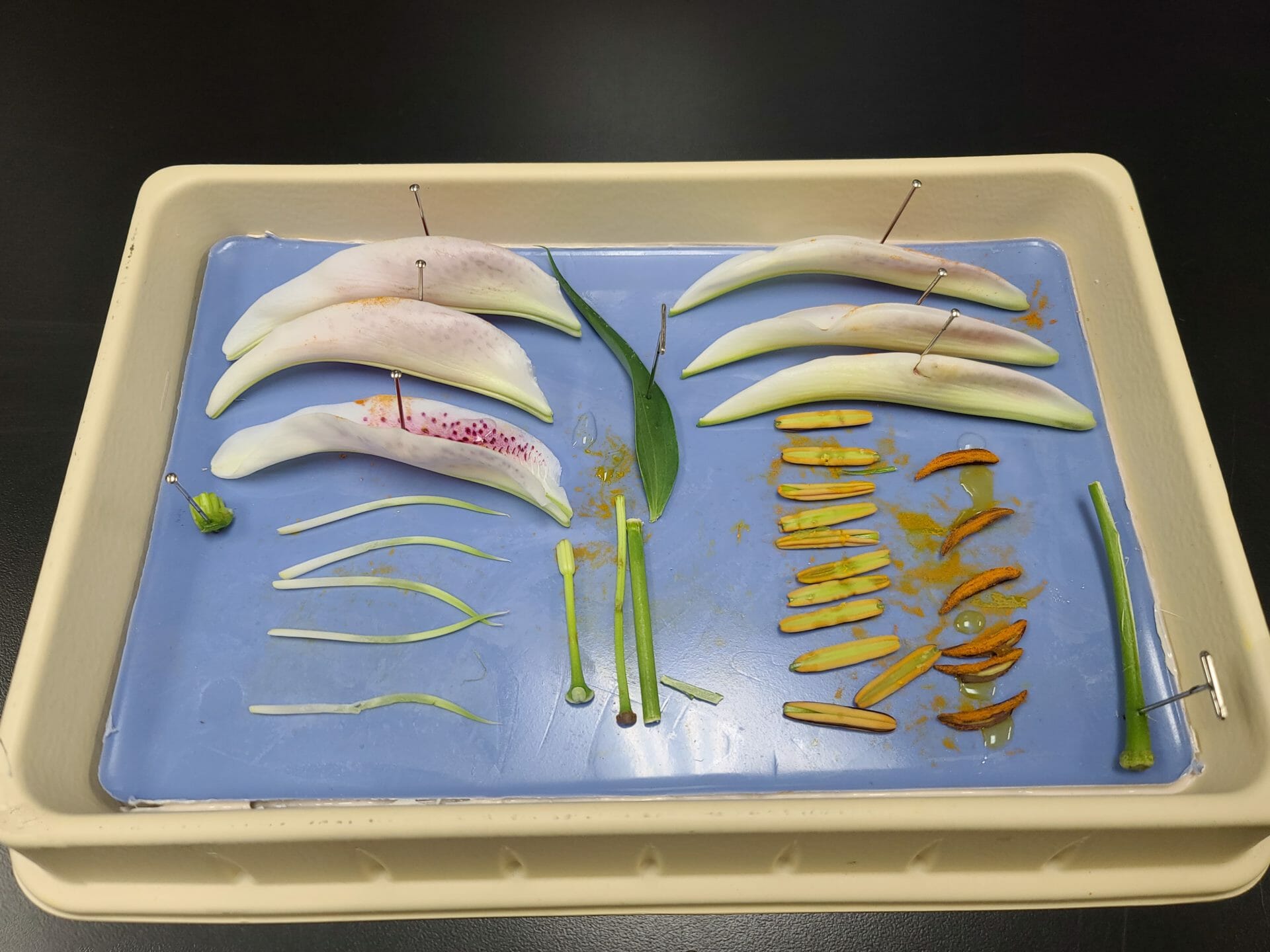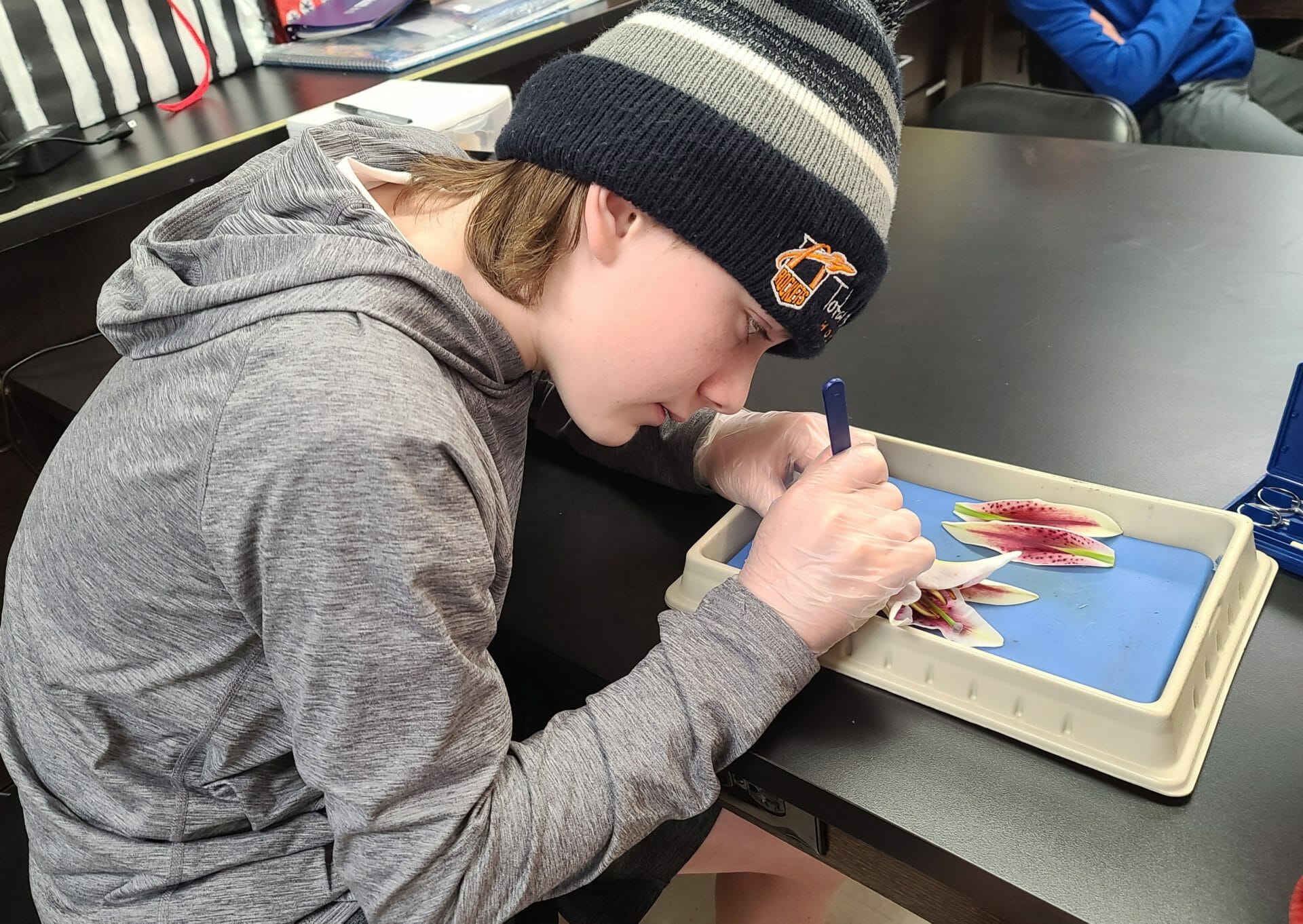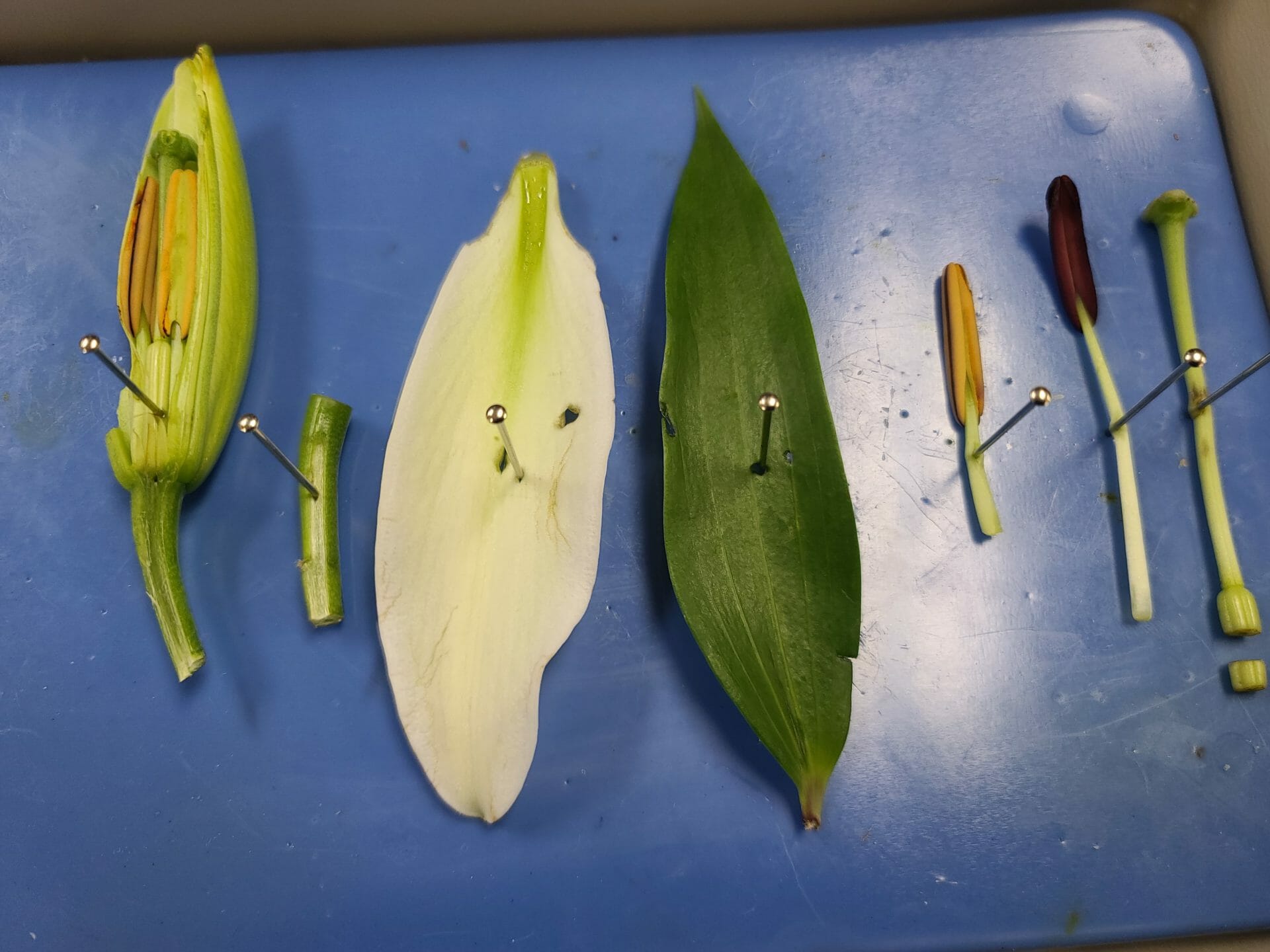Michelle Hrastich, Middle School Science Teacher, recently took advantage of some unseasonably nice weather and led her students on an investigation of the essential question of their current unit: what characteristics do plants and animals have that increase their chances of reproduction? The sixth-grade boys explored the creek behind campus to observe plant and animal adaptations that are used for reproduction and the survival of species.
Hrastich has a master’s degree in Community and Experiential Education. “Figuring out ways to make my curriculum come to life in the real world is a passion of mine,” she says. “This time was a pretty spontaneous expedition, but I had to take advantage of the 60-70 degree weather and it worked perfectly with our new topic.”
Students found plants that reproduce through sexual and asexual means, learned about the importance of seed dispersal, and observed ways in which plants are able to protect themselves from predators. They also observed places that animals could raise their young or hide from predators, as well as traits that would allow the animal to attract a mate.
Students pass plants and animals every day but don’t often stop to observe the phenomena that they see or ask why organisms look or act the way they do. “This was a chance for them to actively use their new vocabulary in a real-world setting. It also taught them to look closer at the world around them,” Hrastich explained. “More than anything else, I hope that my students leave my classroom with a new lens in which to see the world – and the best way to do that is to get them outdoors.”
Students have also been dissecting flowers to learn the parts of the flower and to explain how they reproduce through pollination. After Spring Break, students will grow their own plants in class, collaborate with Upper School students on a Mars Farm project, and regrow scraps of food to see how plants can reproduce through vegetative propagation. The remainder of the year will be based around plant life, ecosystems, and food chains. So, look for students all over campus this Spring.
Way to grow, Rams!
